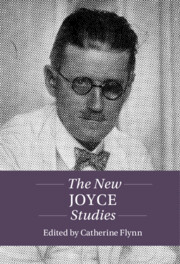Book contents
- The New Joyce Studies
- Twenty-First-Century Critical Revisions
- The New Joyce Studies
- Copyright page
- Contents
- Figures
- Notes on Contributors
- Acknowledgments
- Abbreviations
- Introduction
- Part I Scope
- Part II Fragment and Frame
- Chapter 8 The Intertextual Condition
- Chapter 9 The Macrogenesis of Ulysses and Finnegans Wake
- Chapter 10 After The Little Review
- Chapter 11 Popular Joyce, for Better or Worse
- Part III Perspective
- Bibliography
- Index
Chapter 10 - After The Little Review
Joyce in transition
from Part II - Fragment and Frame
Published online by Cambridge University Press: 01 September 2022
- The New Joyce Studies
- Twenty-First-Century Critical Revisions
- The New Joyce Studies
- Copyright page
- Contents
- Figures
- Notes on Contributors
- Acknowledgments
- Abbreviations
- Introduction
- Part I Scope
- Part II Fragment and Frame
- Chapter 8 The Intertextual Condition
- Chapter 9 The Macrogenesis of Ulysses and Finnegans Wake
- Chapter 10 After The Little Review
- Chapter 11 Popular Joyce, for Better or Worse
- Part III Perspective
- Bibliography
- Index
Summary
Baron’s chapter uses the lenses of periodical culture and reception studies to situate Joyce’s writing after Ulysses in the context of his involvement with the internationalist avant-garde editorially spearheaded by Eugene Jolas and Elliott Paul in transition. As Edmund Wilson stated in 1948, “without transition, it’s an open question whether Finnegans Wake would be comprehensible at all.” This chapter first reads letters around the serializations of Ulysses and Work in Progress to argue that Joyce learnt from his dealings with The Little Review how to use transition to orchestrate the exegesis and apologia of his rule-flouting project. The chapter examines the strategies that established the Wake’s reputation as an avant-garde triumph rather than a fraudulent con; for example, Joyce’s instigation of the publication of numerous essays devoted exclusively to the praise, explanation, and defense of his work as well as his incorporation of negative views. Most importantly, the chapterwill go on to uncover the ways in which transition brought Joyce into collaborations with a cohort of admiring idealists – involving him in relationships which in turn nourished and inflected the text as he wrote it.
Keywords
- Type
- Chapter
- Information
- The New Joyce Studies , pp. 155 - 172Publisher: Cambridge University PressPrint publication year: 2022



